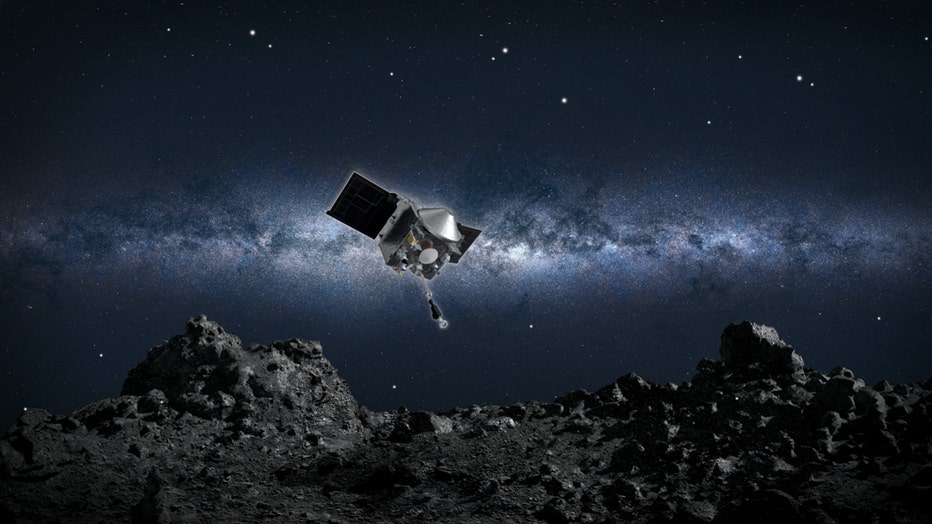Prince George's County scientists help NASA spacecraft land on asteroid Bennu
Prince George’s County scientists help land spacecraft on an asteroid
It sounds like something out of a science fiction novel - landing a satellite on an asteroid. And yet it happened this week - and scientists in Prince George's County helped make it happen.
GREENBELT, Md. (FOX 5 DC) - It sounds like something out of a science fiction movie: a spacecraft traveling millions of miles to land on an asteroid.
That landing happened Tuesday and scientists in Prince George’s County helped make it happen.
READ MORE: NASA mission touches down on asteroid Bennu: Here’s what you need to know
A team at NASA Goddard Space Flight Center in Greenbelt is managing the OSIRIS-REx mission. The spacecraft traveled 200 million miles, orbited a spinning asteroid, and touched down on that asteroid in an area smaller than a couple of parking spaces. It’s all in an effort to collect a sample to bring back to Earth.

OSIRIS-REx spacecraft collecting a sample of Bennu
The asteroid, named Bennu, is about the size of the Empire State Building and holds insight into our very existence.
“We picked Bennu because it is the most accessible asteroid that contains ancient, carbon-rich material that will give us insight into the origins of the solar system, the origin of Earth, the origin of life, perhaps,” said Jason Dworkin, OSIRIS-REx project scientist at Goddard Space Flight Center.
NASA’s OSIRIS-REx spacecraft ready for touchdown
OSIRIS-REx spacecraft is set to collect samples from asteroid Bennu! NASA Goddard Chief Scientist Jim Garvin joined us with more!
There’s also a small chance Bennu could hit Earth more than a hundred years from now. Dworkin says this mission could help future generations divert it.
“What’s more, this information could be applied to other similar asteroids,” said Dworkin. “So when other asteroids are detected that might be hazardous, we can use what we’ve learned about navigating around such a small object.”
Download the FOX 5 DC News App for Local Breaking News and Weather
Dworkin is among those who have been working on this for the last 16 years. He said he’s elated by the successful landing after the space craft’s launch several years ago.
“The flight system worked perfectly,” he said.

This mosaic image shows Bennu’s entire surface and composition. (NASA)
It’s still unknown how much material was collected. Dworkin said that information will be known soon and the decision will be made to return to Bennu for an additional sample or make the journey back to Earth. He’s hoping for the latter.
The sample won’t make it back until 2023. At that point, it will be utilized by scientists around the world, some of who haven’t even been born yet –– and some of the material will make that 200 million mile journey back to Prince George’s County.

